Lucca in Tuscany, located on a plain at the foot of Apuan Alp, is one of the charming cities in Tuscany region. It doesn’t attract so many tourists like the other cities, for example, Florence. But it has many interesting facts that the other cities don’t have. Things such as the music festival, churches, streets on the city wall, local food events are the major attractions. Besides, it is also the birthplace of the famous Italian opera composer Giacomo Puccini.
Therefore, we spent a few hours in Lucca during the visit to the Tuscany region. We wandered through the streets and squares, cycled on the city wall, listened tour guide talking about Giacomo Puccini. There is a lot to see, to do, and to learn in Lucca.
Things that I like in Lucca are:
- Cycling route on the medieval walls
- The layouts of the streets and squares
- The Clock Tower, the tallest tower in Lucca
- Garden on the rooftop of the Guinigi Tower
- Casa di Puccini, the house of the opera composer
- Churches with richly arcaded façades
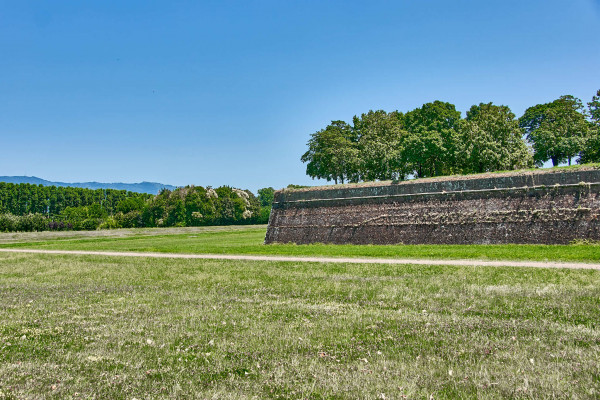
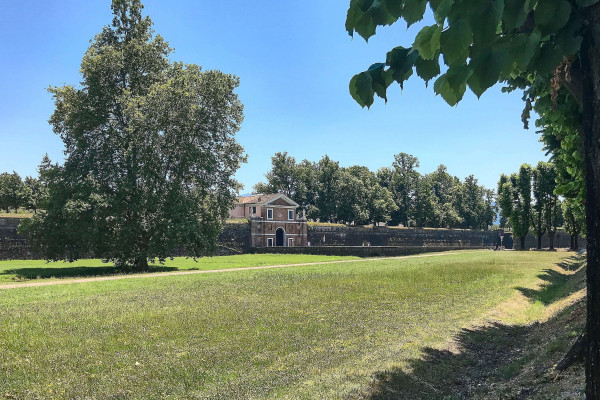
The layouts of the streets and squares
The narrow and wider streets
It is pretty easy to gain orientation in Lucca in Tuscany. There are two types of traditional street layouts. The narrow streets run from north to south, and the wide streets run from west to east. It is not so easy to get lost in the old town. All the roads are in good status. In general, it is easy to walk around, even for people with limited mobility.
The elliptical shape of Piazza dell’Anfiteatro
The streets connect many squares. If you walk towards the centre, you will not miss the famous Piazza dell’Anfiteatro. The ring of buildings surrounding the square follows the elliptical shape of the Roman Amphitheater of Lucca. We could reach the plaza through four gateways located at the four vertices of the ellipse.
Buildings around the square are restaurants and some small shops. Other public squares are such as Piazzale Verdi, Piazza Napoleone, and Piazza San Michele. During lunchtime, nearly all the restaurants were full. But most of them were locals.
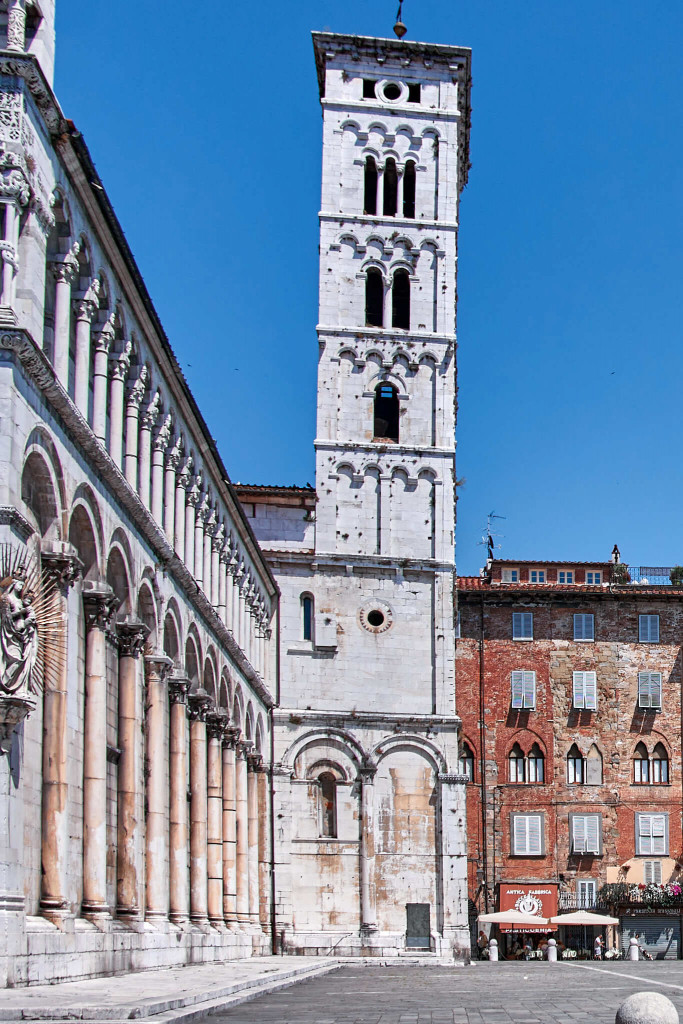
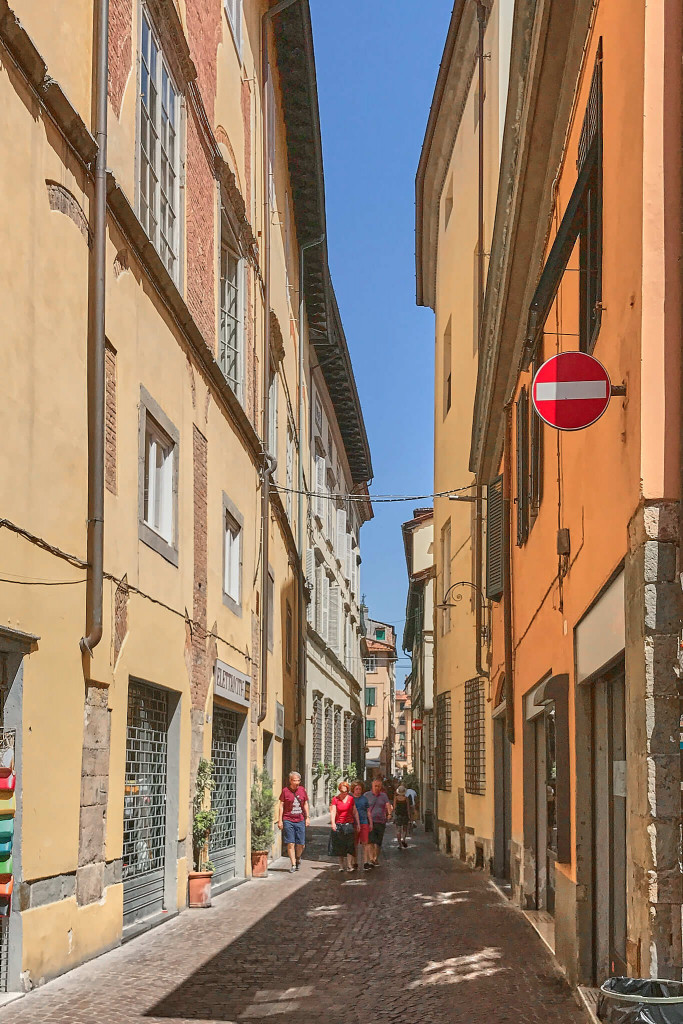
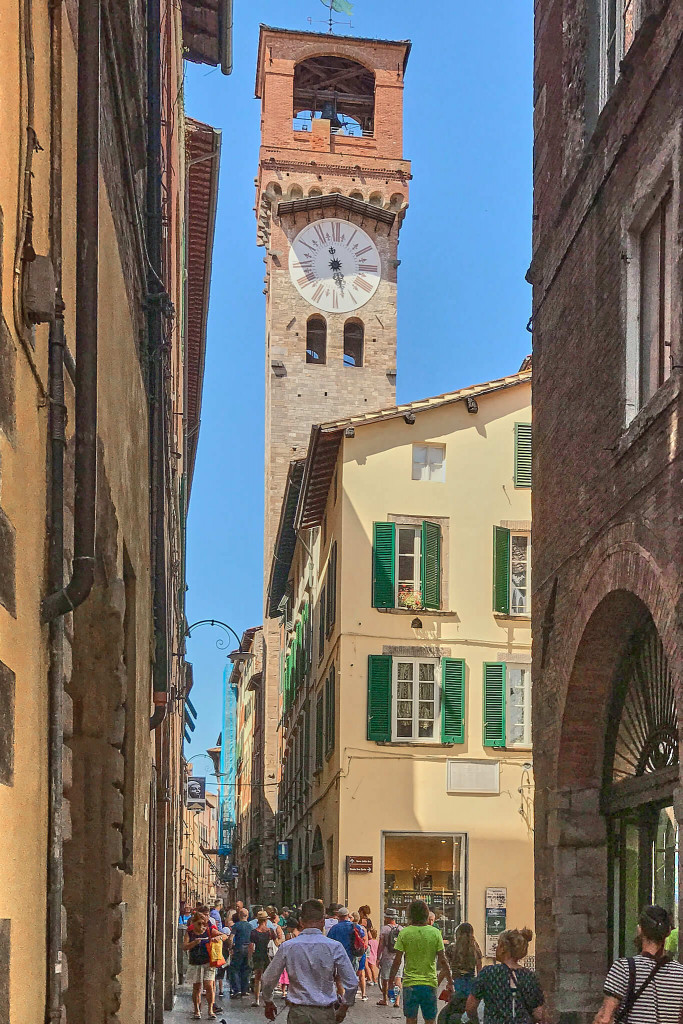
The Clock Tower, the tallest tower in Lucca
During medieval times, more than 130 towers dominated the Lucca’s skyline. Most columns were parts of the private homes of prosperous merchant families. The purposes of building towers were not only for protection but also as symbols of their power and wealth. Today, only a few still exist, for example, the Clock Tower. By the way, the Clock Tower is the tallest in Lucca.
You can climb up the steep and narrow stairs to the top of the Clock Tower. There you can see the Renaissance walls and the narrow streets winding through the city. Looking around, the views of the surrounding hills and mountains of the Tuscan countryside are breathtaking.
Garden on the rooftop of the Guinigi Tower
The Guinigi Tower is a typical example of local Romanesque-Gothic architecture. The unique feature of the Guinigi Tower is the garden on the rooftop of the tower. The rooftop garden consists of three flowerbeds and ancient oak trees, symbolizing rebirth and renewal.
By the 13th century, the Guinigi family was one of the wealthiest families in Lucca. Later, the family’s descendants donated the Guinigi Tower to the government.

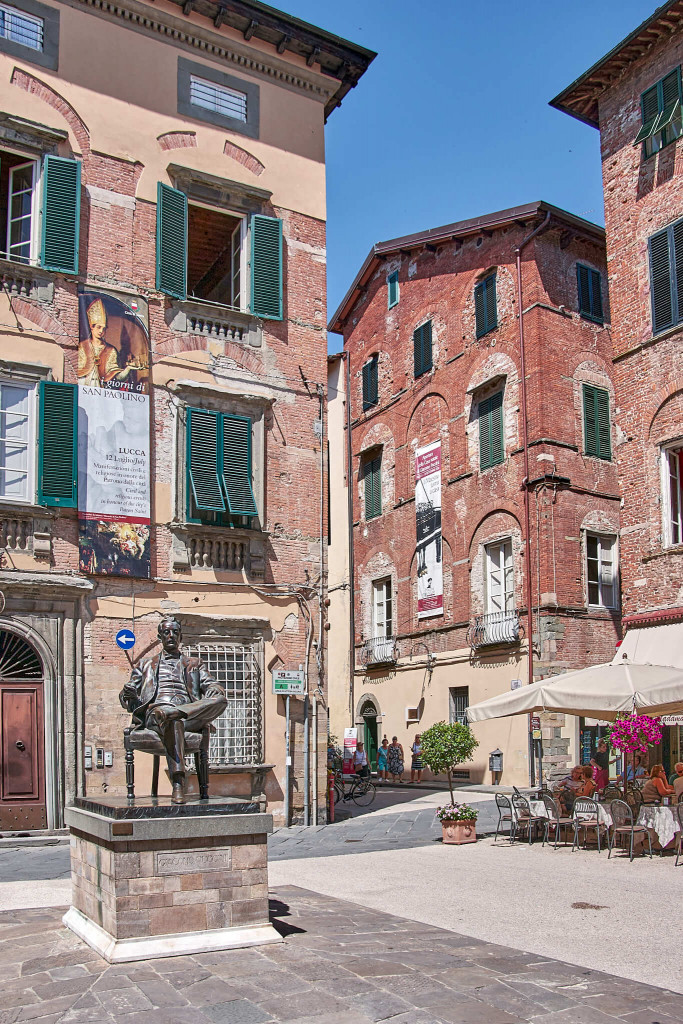

Casa di Puccini, the house of the opera composer
We found the former home of the opera composer Giacomo Puccini in the historical centre (Corte S. Lorenzo, 9). It is the birthplace place of the composer. Today, the house is a museum where visitors can explore the traces left behind by the great composer who created extraordinary operas known throughout the world.
Stood next to a tour group in front of Puccini’s statue, we eavesdropped on some interesting stories related to Puccini’s childhood told by the tour guide. The figure is several metres away from his birthplace. At the corner, the Cafe Madama Butterfly reminded me of that sad love story written by the composer. For a small budget, you could join a Puccini Festival Opera Recitals and Concert.
A Puccini opera festival takes place between July and August each year. You can get related information at the tourist office next to the parking places outside of the walls.
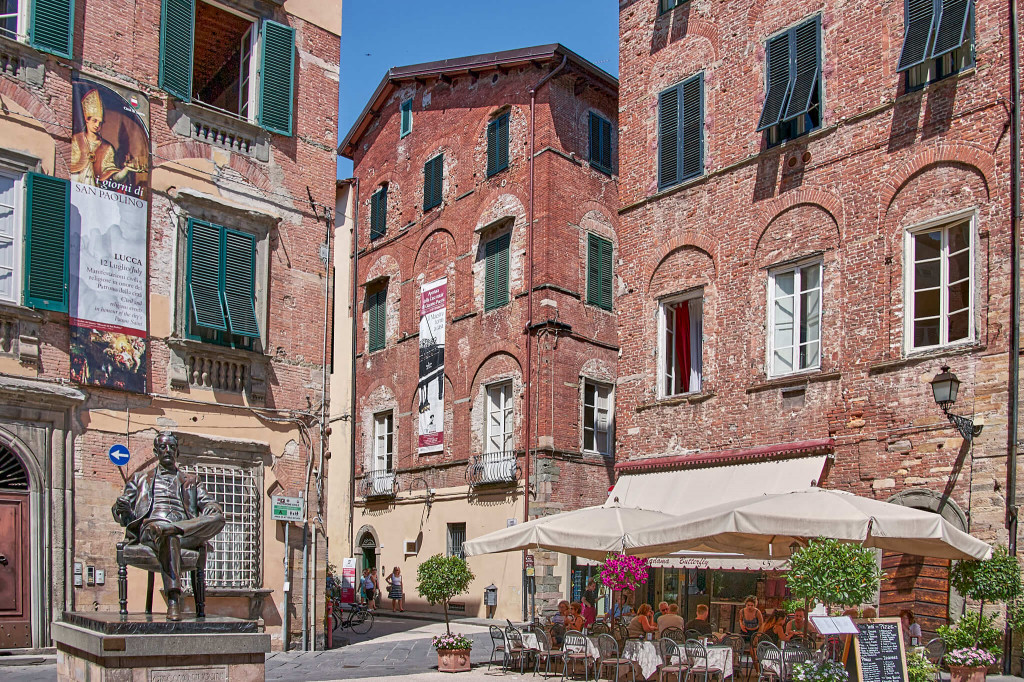
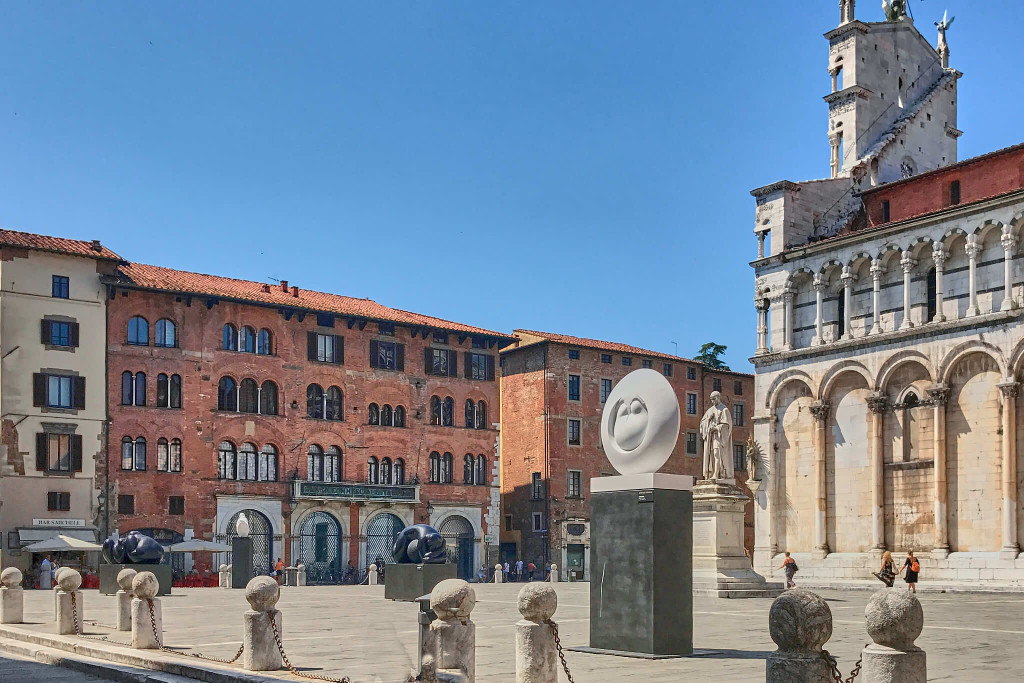
Churches with richly arcaded façades
There are many medieval churches with richly arcaded façades and campaniles, and some of them are as old as the eighth century. Religion has always played a big part in local life. In the past, Lucca was the central stopover on the Pilgrimage route of Via Francigena. Therefore, plenty of money made its way to the building of churches in great architecture in Lucca.
San Michele in Foro
There are around 100 churches in Lucca from many eras. It is impossible to visit all the churches during a short stay. One impressive church is, for example, San Michele in Foro. Its façade built in the 13th century has a series of sculptures and inlays.
Duomo di San Martino
Duomo di San Martino is famous for its tall columnar arcades and the fine campanile. Next to the cathedral is a beautiful bell tower. I can even see it from the walls.
San Cristoforo
The third church I have taken a close look at is San Cristoforo. It is on the narrow street, Via Fillungo, in the center. That’s why I could not picture it properly. It serves as a memorial for those who lost lives in the wars.
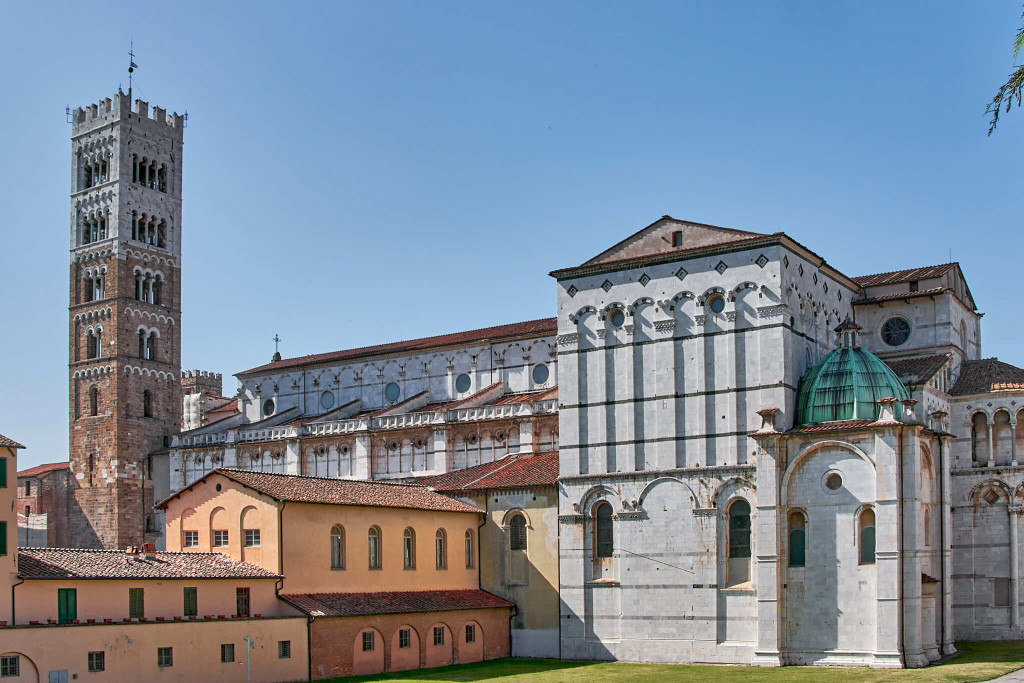
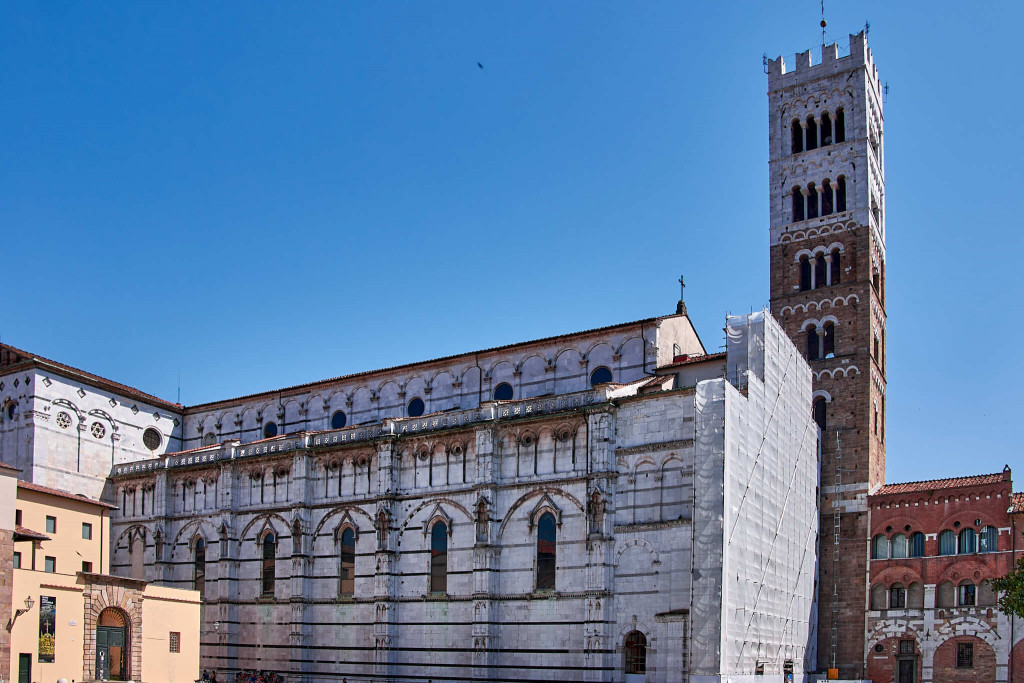
Travel tips for Lucca in Tuscany
Cultural events
Lucca is also famous for its cultural events, the Music Festival, and the Comics & Games event.
Annually, Lucca hosts many concerts performed by many international megastars.
The Comics & Games event takes place at the end of October each year. For more information on the event and full program, please check out the official site for Lucca Comics & Games.
Suggested tours
Lucca is one of the best day trip destinations from Pisa. Many tours start from Florence. If you are on a cruise trip, you can also book a tour starting from Livorno. Take a look at the tours below, you might find one which suits your needs.
Where to stay
Because of so many events during the summertime, it could be hard to find a hotel. If you plan to stay there, please take a look at below middle-range hotels:
How to get there
- Train from Pisa central station goes to Lucca. Lucca is also on the main Viareggio-Florence Santa Maria Novella line, so there is direct service from both cities.
- Buses to Lucca leave outside the arrivals hall of the Pisa Airport. They arrive at Piazzale Verdi after a fifty-minute scenic ride.
- By car, take the A11 (E76) that goes through Lucca. There are two large car parks outside the walls of Lucca.
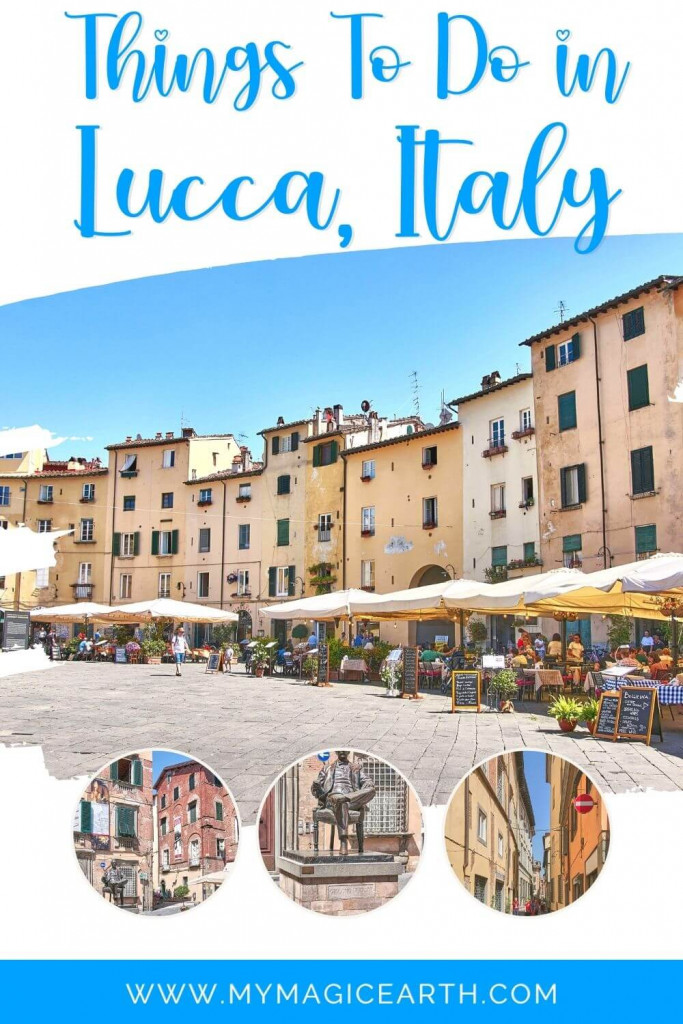
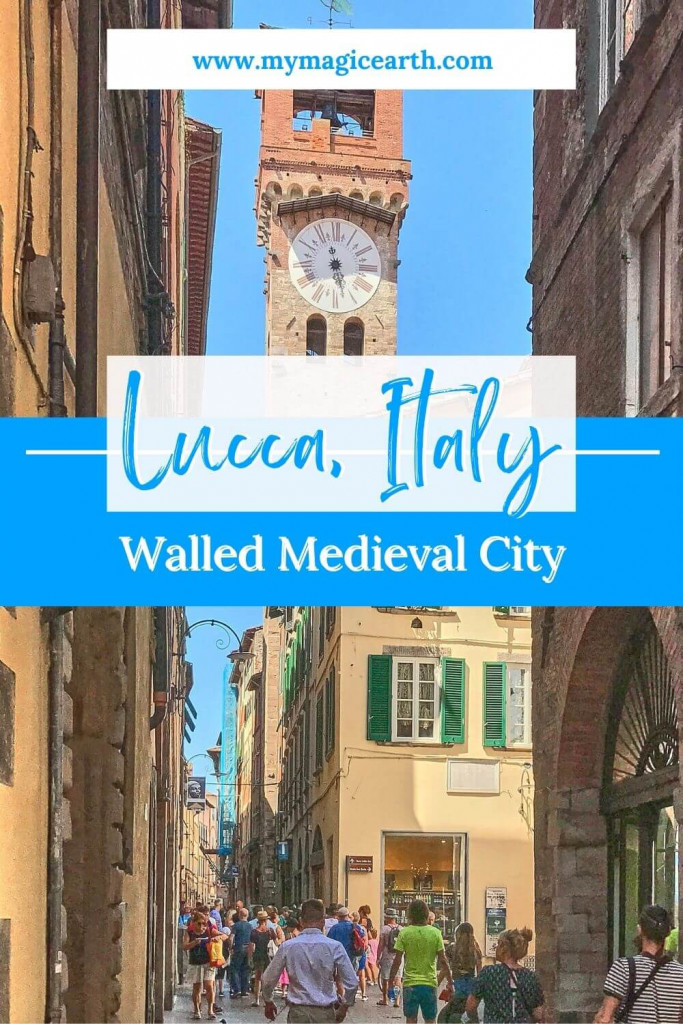
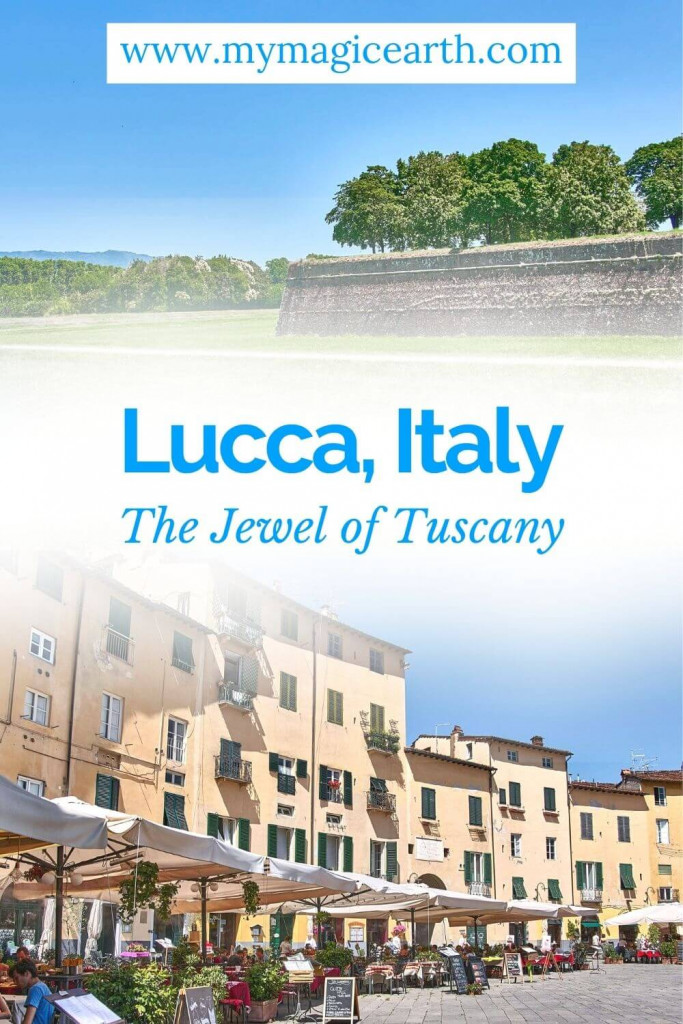

Lucca was such a fun town to explore and be in. We loved it! We were there for about 2 weeks as a home base for exploring Pisa and Florence day trips a few years back. Took a few cooking classes as well right outside the wall of Lucca. Great memories!
Thanks for the comments! I’a glad that you selected Lucca as a base to explore the surrounding! We would do the same if we go there again.
We liked this town and happened to be there on the same day as the antique market (once a month event), which was a lot of fun!